Abstract
OBJECTIVES: Motor vehicle exhaust fumes are the main source of atmospheric pollution in cities in industrialised countries. They cause respiratory disease and annoy people exposed to them. The relation between ambient exposure to air pollution mainly from motor vehicles and annoyance reactions in a general population was assessed. Also, the importance of factors such as age, sex, respiratory disease, access to the use of a car, and smoking habits on the reporting of these reactions was studied. METHODS: A postal questionnaire was sent out in 55 urban areas in Sweden that had nearly identical air quality monitoring stations of the urban air monitoring network. From each area, 150 people aged 16-70 were randomly selected. The questionnaire contained questions on perception of air quality as well as a question on how often exhaust fumes were annoying. RESULTS: Six-monthly nitrogen dioxide concentrations correlated consistently with the prevalence of reported annoyance related to air pollution and traffic exhaust fumes. Black smoke and sulphur dioxide had no significant effects. The frequency of reporting annoyance reactions was higher among people with asthma, women, and people with lack of access to a car. CONCLUSIONS: In this study town dwellers could detect poor air quality at concentrations well below current guidelines for outdoor air pollution. This suggests that questionnaire studies have a place in monitoring air quality.
Full text
PDF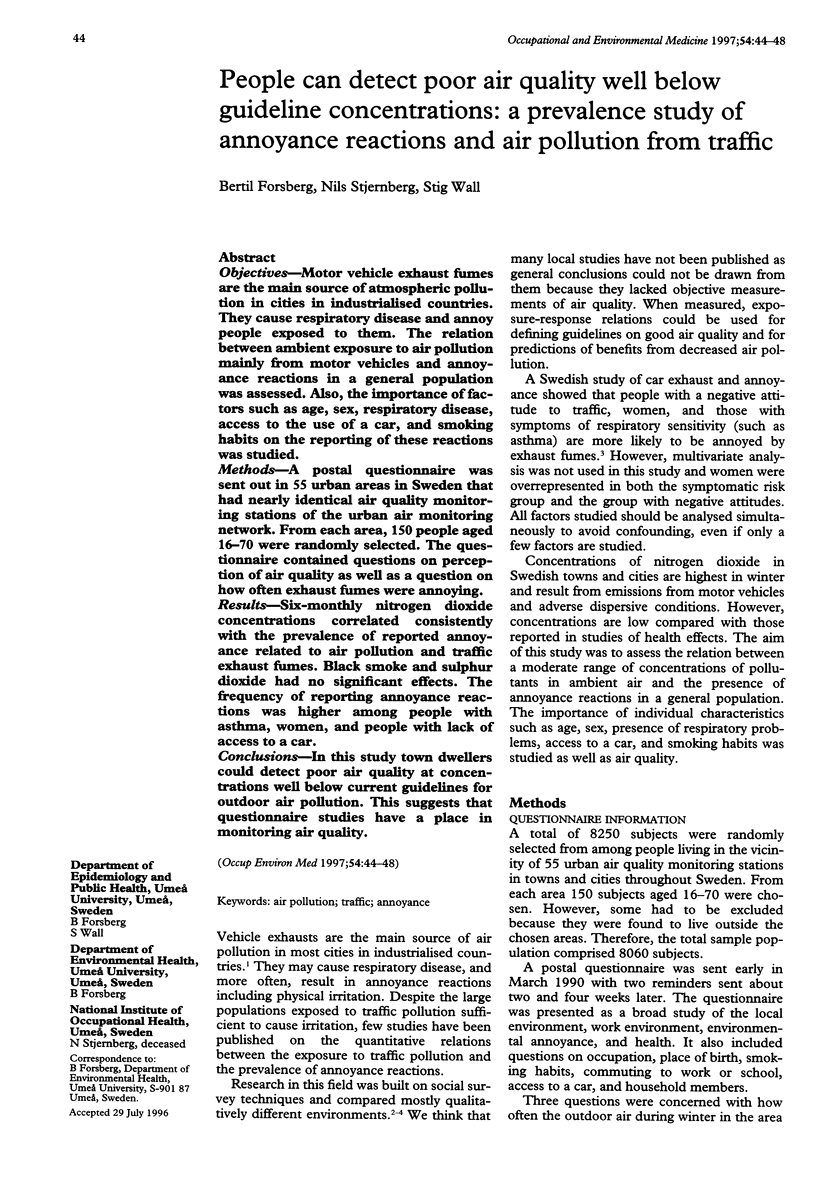
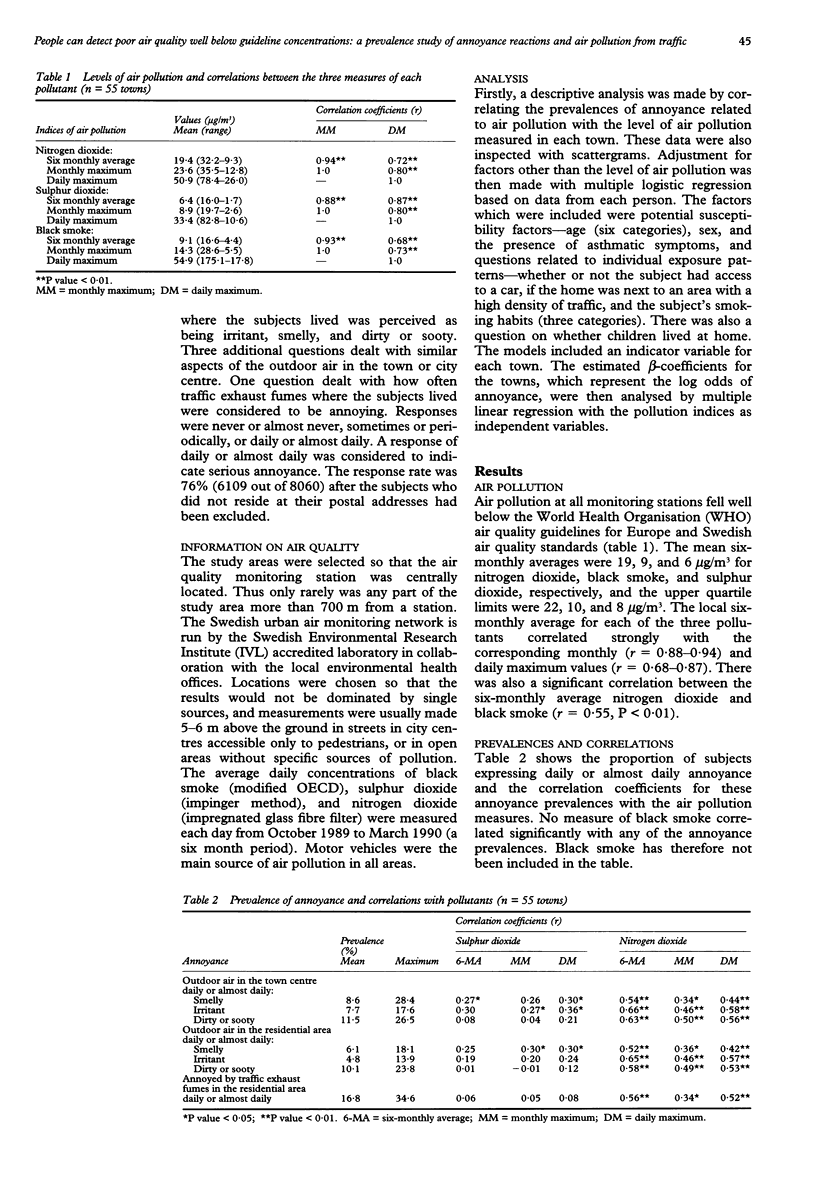
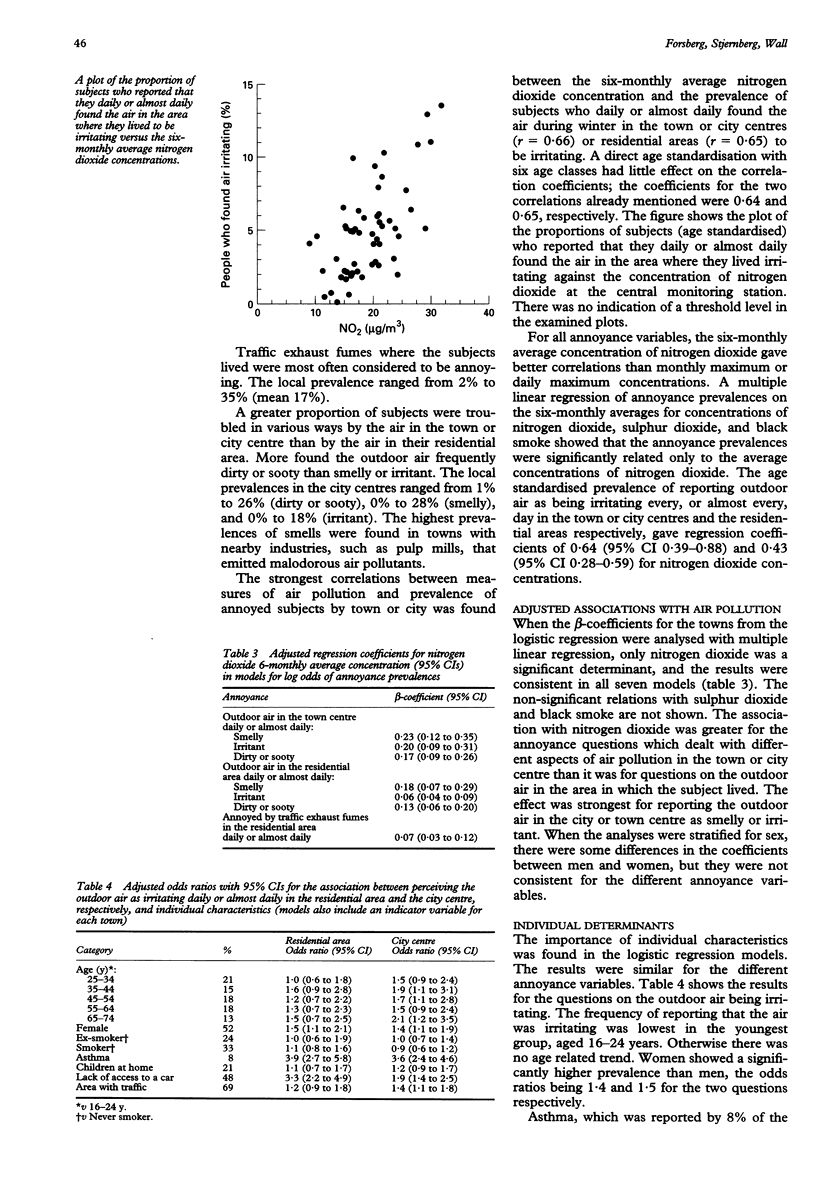
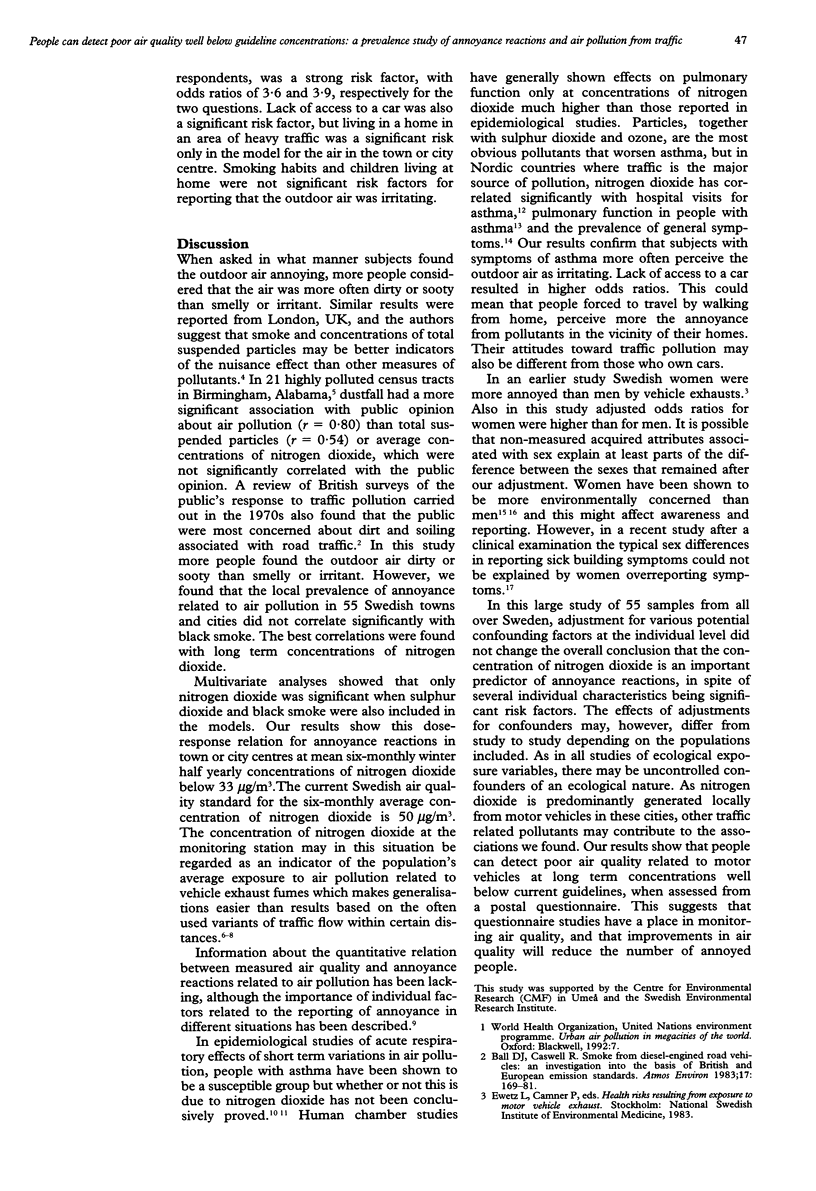
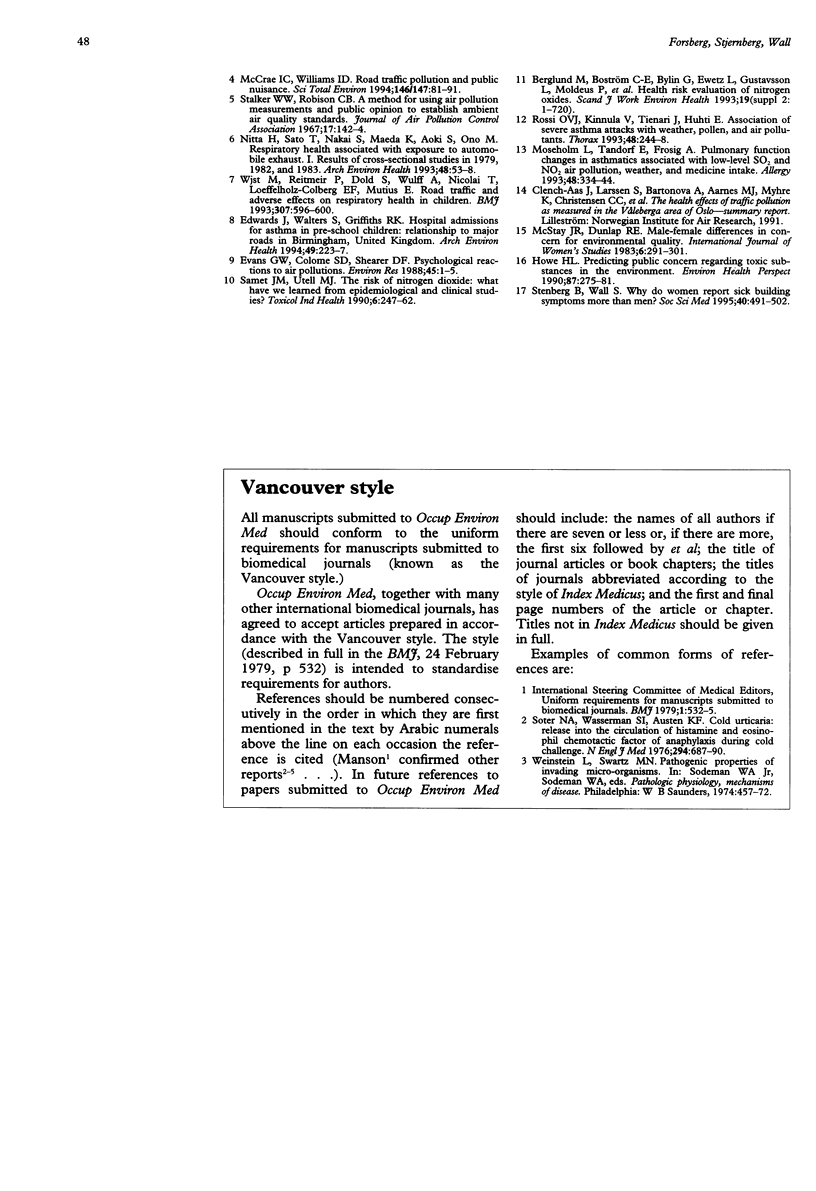
Selected References
These references are in PubMed. This may not be the complete list of references from this article.
- Edwards J., Walters S., Griffiths R. K. Hospital admissions for asthma in preschool children: relationship to major roads in Birmingham, United Kingdom. Arch Environ Health. 1994 Jul-Aug;49(4):223–227. doi: 10.1080/00039896.1994.9937471. [DOI] [PubMed] [Google Scholar]
- Evans G. W., Colome S. D., Shearer D. F. Psychological reactions to air pollution. Environ Res. 1988 Feb;45(1):1–15. doi: 10.1016/s0013-9351(88)80002-1. [DOI] [PubMed] [Google Scholar]
- Howe H. L. Predicting public concern regarding toxic substances in the environment. Environ Health Perspect. 1990 Jul;87:275–281. doi: 10.1289/ehp.9087275. [DOI] [PMC free article] [PubMed] [Google Scholar]
- Moseholm L., Taudorf E., Frøsig A. Pulmonary function changes in asthmatics associated with low-level SO2 and NO2 air pollution, weather, and medicine intake. An 8-month prospective study analyzed by neural networks. Allergy. 1993 Jul;48(5):334–344. doi: 10.1111/j.1398-9995.1993.tb02402.x. [DOI] [PubMed] [Google Scholar]
- Rossi O. V., Kinnula V. L., Tienari J., Huhti E. Association of severe asthma attacks with weather, pollen, and air pollutants. Thorax. 1993 Mar;48(3):244–248. doi: 10.1136/thx.48.3.244. [DOI] [PMC free article] [PubMed] [Google Scholar]
- Samet J. M., Utell M. J. The risk of nitrogen dioxide: what have we learned from epidemiological and clinical studies? Toxicol Ind Health. 1990 Mar;6(2):247–262. [PubMed] [Google Scholar]
- Stalker W. W., Robison C. B. A method for using air pollution measurements and public opinion to establish ambient air quality standards. J Air Pollut Control Assoc. 1967 Mar;17(3):142–144. doi: 10.1080/00022470.1967.10468959. [DOI] [PubMed] [Google Scholar]
- Stenberg B., Wall S. Why do women report 'sick building symptoms' more often than men? Soc Sci Med. 1995 Feb;40(4):491–502. doi: 10.1016/0277-9536(94)e0104-z. [DOI] [PubMed] [Google Scholar]
- Wjst M., Reitmeir P., Dold S., Wulff A., Nicolai T., von Loeffelholz-Colberg E. F., von Mutius E. Road traffic and adverse effects on respiratory health in children. BMJ. 1993 Sep 4;307(6904):596–600. doi: 10.1136/bmj.307.6904.596. [DOI] [PMC free article] [PubMed] [Google Scholar]


